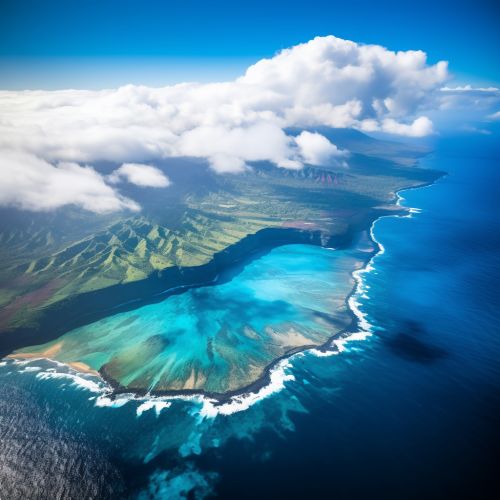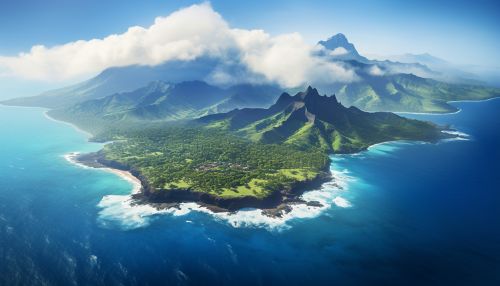Hawaiian Islands
Geography
The Hawaiian Islands are an archipelago of eight major islands, several atolls, numerous smaller islets, and seamounts in the North Pacific Ocean, extending some 1,500 miles from the island of Hawaii in the south to northernmost Kure Atoll. Although located in the central Pacific, the islands are politically part of the United States. The islands are characterized by their tropical climate, beautiful landscapes, and rich cultural heritage.


Geology
The Hawaiian Islands are volcanic in origin. Each island is made up of at least one primary volcano, although many islands are composites of more than one. The age of the archipelago has been estimated using potassium-argon dating methods. From this dating, it appears that the islands themselves are progressively older as you move from southeast to northwest.
Climate
The Hawaiian Islands are located in the tropics, and they experience a warm tropical climate tempered by trade winds. The temperatures are relatively consistent throughout the year, with average highs ranging from the mid-80s to low 90s (Fahrenheit) and average lows in the mid-70s. The islands receive most of their precipitation during the winter months (October to April).
Flora and Fauna
The Hawaiian Islands are known for their unique and diverse flora and fauna, much of which is endemic to the islands. The isolation of the islands has led to the evolution of many unique species of plants and animals. The islands are home to a large number of endemic species, including the Hawaiian honeycreeper birds, the Hawaiian monk seal, and the Hawaiian hoary bat.
History
The Hawaiian Islands were originally settled by Polynesians who arrived in canoes. The first Europeans to arrive were led by British explorer James Cook in 1778. The islands were united under a single ruler, King Kamehameha I, in the early 19th century. The islands were annexed by the United States in 1898 and became a state in 1959.
Culture
Hawaiian culture is a blend of Native Hawaiian, Polynesian, Asian, and American influences. Traditional Hawaiian culture is preserved in the language, music, dance (hula), and cuisine of the islands. The Aloha spirit is a significant part of Hawaiian culture and refers to the welcoming and friendly attitude for which the islands are known.
Economy
The economy of the Hawaiian Islands is diverse, with tourism being the largest industry. Other significant sectors include agriculture, manufacturing, and military defense. The islands are known for their production of tropical fruits, macadamia nuts, and coffee.
